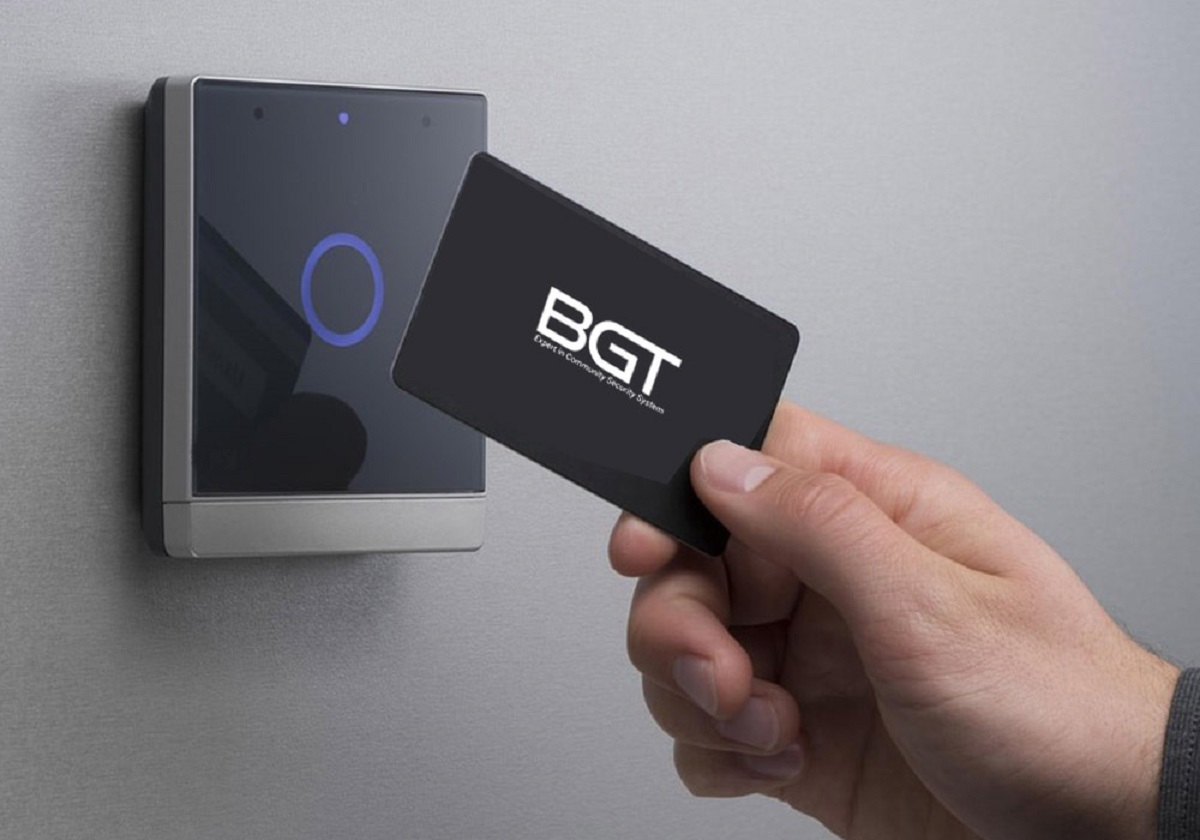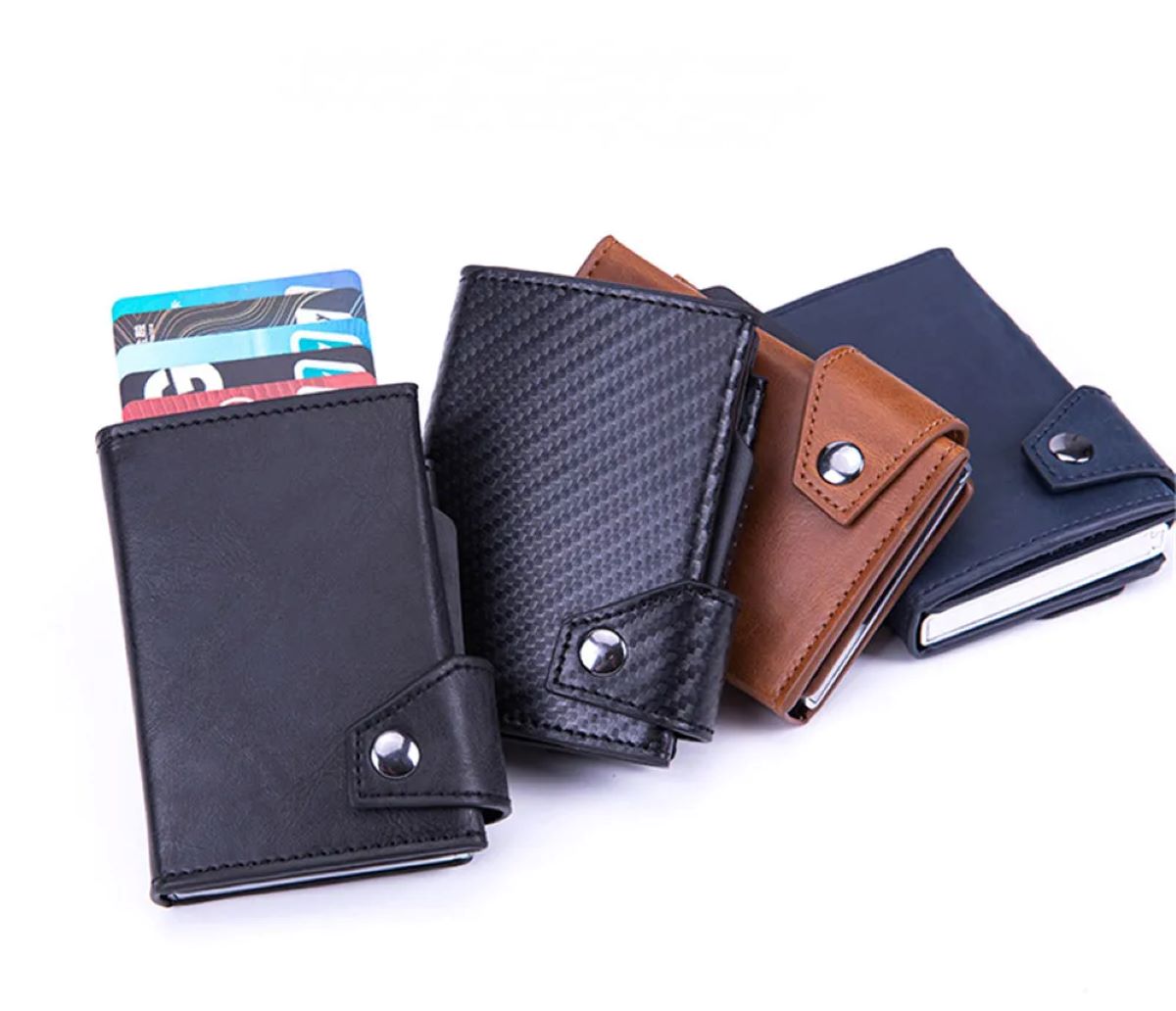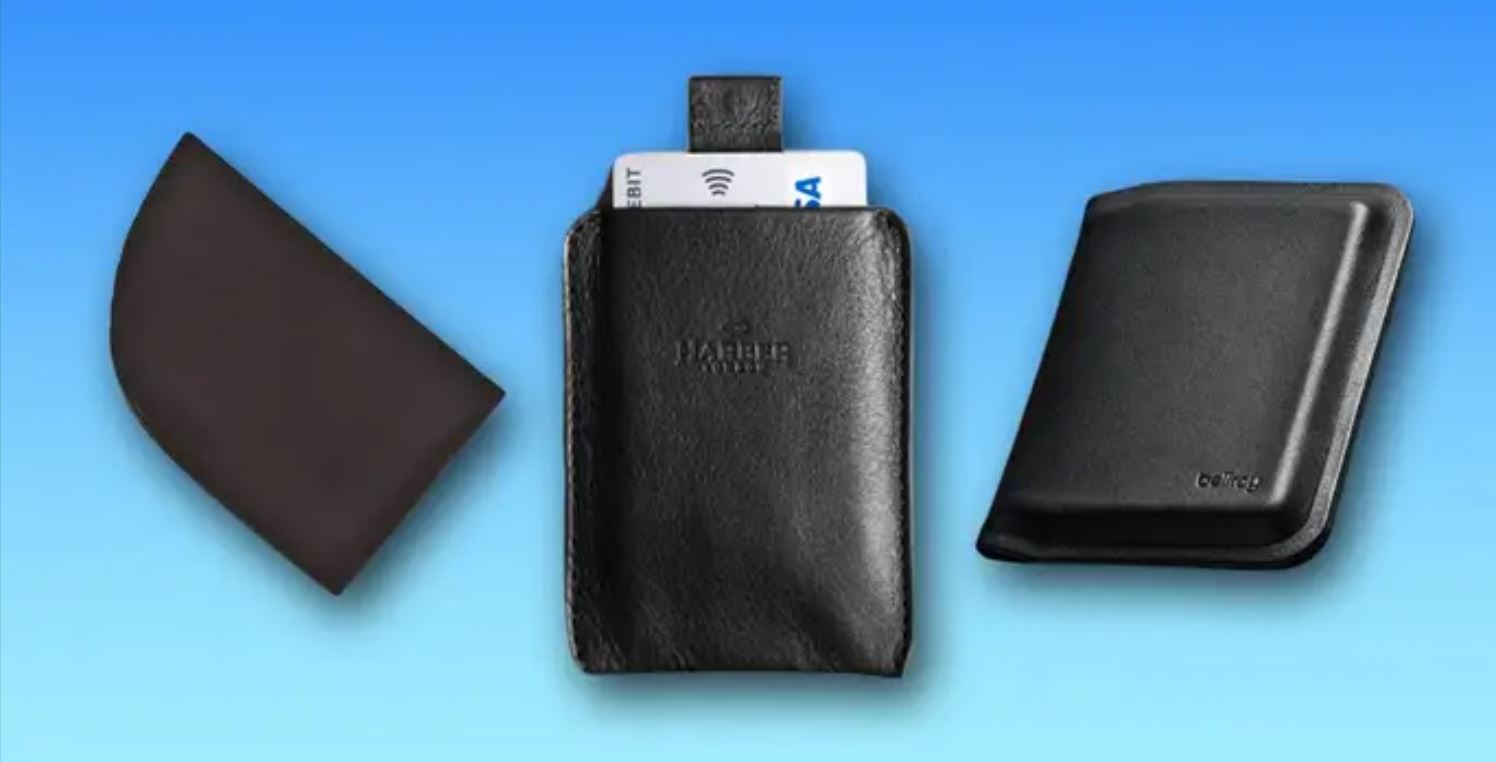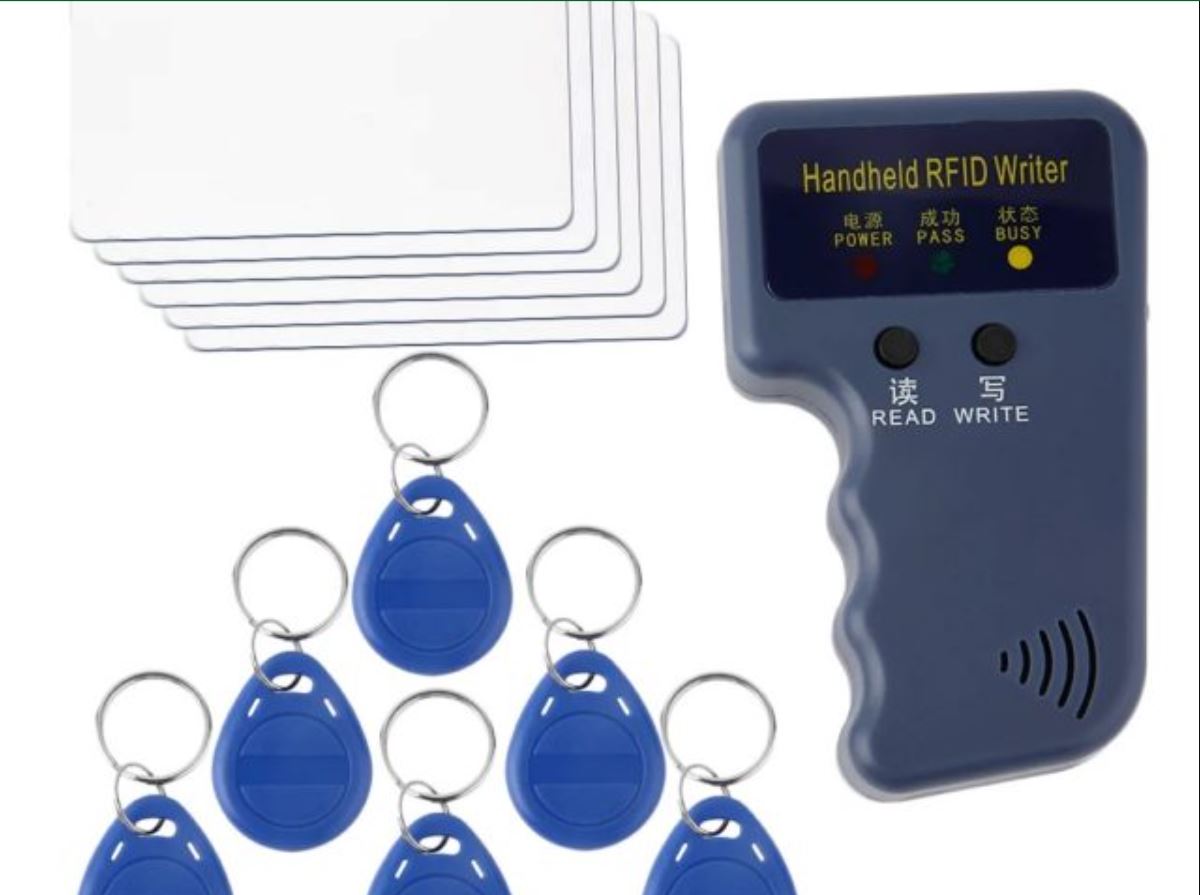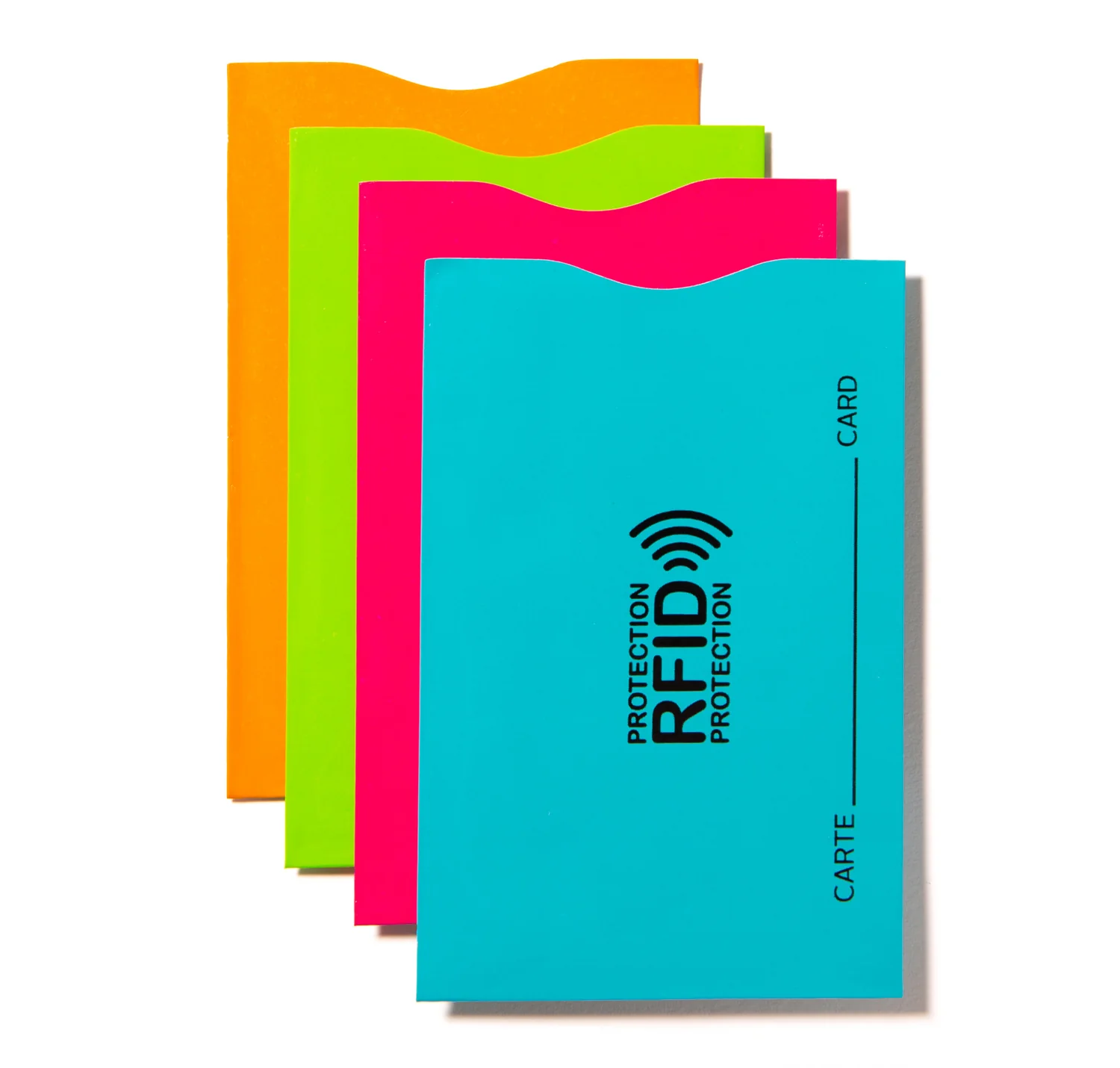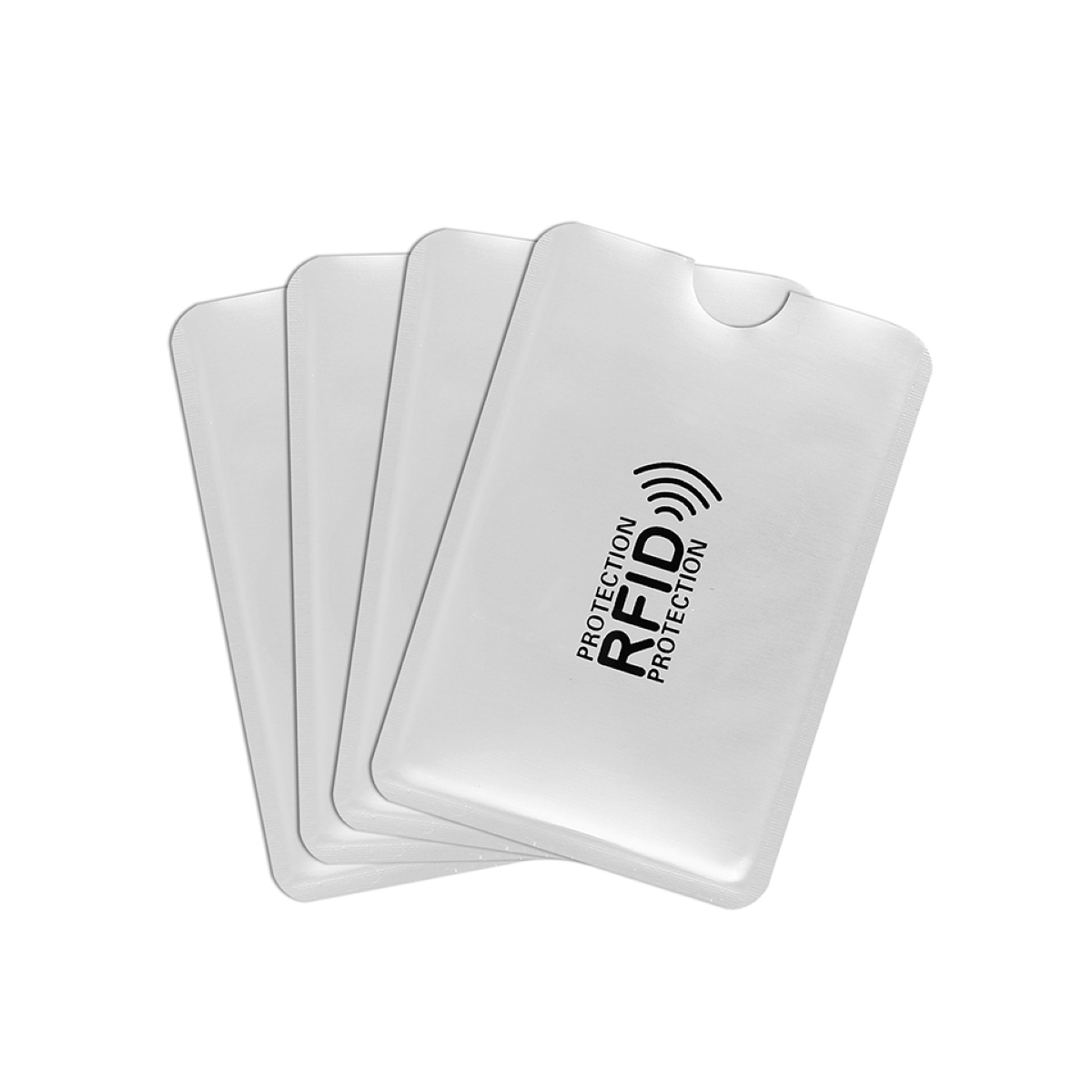Introduction
Welcome to the world of RFID cards, where convenience and security merge seamlessly. RFID, short for Radio-Frequency Identification, is a technology that has revolutionized the way we interact with everyday objects, such as access cards, credit cards, and transportation cards. In this article, we will explore the fascinating world of RFID cards, their components, and how they work.
RFID cards are becoming increasingly prevalent in our daily lives, offering convenience in various settings, including offices, hotels, hospitals, and public transportation systems. These cards provide a contactless way of accessing doors, making payments, and storing vital information.
In this article, we will delve into the inner workings of RFID cards and discover the components that make them function. We will also explore the process behind the communication between the card and the reader, shedding light on the technology that powers these innovative devices.
Furthermore, we will examine the numerous applications of RFID cards across different industries and the advantages they bring to the table. However, it is important to also consider the potential disadvantages and security concerns associated with the use of RFID cards.
By gaining a better understanding of RFID technology and its applications, you will be equipped with valuable knowledge that can help you make informed decisions when it comes to utilizing these cards in your daily life.
What is an RFID Card?
An RFID card, or Radio-Frequency Identification card, is a small device that uses radio waves to communicate with a reader. It is designed to store and transmit data wirelessly, making it a convenient and efficient tool for various applications. RFID cards are typically embedded with a microchip and an antenna, allowing them to interact with RFID readers.
These cards come in different forms, including access cards, credit cards, transportation cards, and even key fobs. Each card is equipped with a unique identifier or a specific set of data that can be read by an RFID reader. This information can include personal identification details, access permissions, payment information, or other relevant data depending on the card’s purpose.
Unlike traditional barcode or magnetic stripe cards, RFID cards do not require physical contact with the reader. The information stored in the card’s microchip is transmitted via radio waves when it comes into the proximity of an RFID reader. This contactless feature makes RFID cards more user-friendly and robust, as they do not suffer from wear and tear commonly associated with physical contact cards.
RFID cards rely on electromagnetic fields for their functionality. When placed near an RFID reader, the reader’s electromagnetic field powers the card and activates its microchip. This allows the card to transmit its stored data back to the reader, which can then be processed and interpreted by the system.
Overall, RFID cards revolutionize the way we interact with everyday objects and simplify various processes. Whether it’s granting access to secure areas, making cashless payments, or managing transportation systems, RFID technology offers a seamless and convenient solution.
Components of an RFID Card
An RFID card consists of several key components that work together to enable its functionality. Understanding these components is crucial in comprehending how an RFID card operates. Let’s take a closer look at the main components of an RFID card:
- Microchip: This is the brain of the RFID card. The microchip, also known as an integrated circuit (IC) or a tag chip, stores digital data and performs essential functions such as data processing and encryption. The microchip is responsible for storing unique identifiers and other information that can be read by the RFID reader.
- Antenna: The antenna is an essential part of the RFID card that enables communication between the card and the reader. It transmits and receives radiofrequency signals, allowing data to be exchanged wirelessly. The design and size of the antenna can vary depending on the card’s application and frequency range.
- Power Source: RFID cards can have different power sources depending on their type. Some cards are powered by the electromagnetic field generated by the RFID reader when in proximity, while others may have an embedded battery for enhanced functionality or longer read range.
- Enclosure/Packaging: The enclosure or packaging of an RFID card provides physical protection to the internal components, ensuring durability and longevity. The material used for the packaging can vary, ranging from plastic to laminate or even paper-based materials.
- Security Features: To enhance security and prevent unauthorized access to the information stored on the card, RFID cards often incorporate various security features. These may include encryption algorithms, password protection, or even biometric authentication methods such as fingerprint or iris scanning.
These components work in harmony to enable the functionality of an RFID card. The microchip stores and processes data, the antenna facilitates wireless communication, the power source provides energy, the enclosure protects the internal components, and the security features ensure data integrity and privacy.
Having a clear understanding of the components of an RFID card lays the foundation for comprehending how these cards operate and opens the door to exploring their wide range of applications and benefits.
How Does an RFID Card Work?
An RFID card operates using a simple yet sophisticated technology that enables wireless communication with RFID readers. The process involves the interaction between the card’s microchip and the reader’s antenna, facilitated by electromagnetic fields. Let’s delve into the details of how an RFID card works:
1. The Reader and Antenna: The RFID reader consists of an antenna that generates an electromagnetic field. When the RFID card comes into proximity with the reader, the antenna emits radiofrequency signals.
2. Powering the Card: The electromagnetic field generated by the reader’s antenna powers the RFID card. The antenna on the card captures the energy from the field and converts it into electrical power, which activates the card’s microchip.
3. Communication Between the Card and Reader: Once powered, the RFID card’s microchip starts transmitting data. The microchip modulates the energy received from the reader’s electromagnetic field and sends it back as a series of radio waves.
4. Data Transmission: The radio waves containing the card’s unique identifier or stored information are received by the reader’s antenna. The reader’s antenna then converts the received radio waves into electrical signals which are processed by the reader’s circuitry.
5. Interpretation of Data: The reader’s circuitry interprets the data received from the card and relays it to the system or application connected to the reader. This data can include personal identification information, access permissions, or any other relevant data stored on the RFID card.
6. System Integration: The data received from the RFID card is integrated into the system or application. Depending on the application, this data can be used for various purposes, such as granting access, processing payments, tracking inventory, or managing attendance.
It is important to note that RFID cards can operate in different frequency ranges, including low frequency (LF), high frequency (HF), and ultra-high frequency (UHF). The choice of frequency depends on the application requirements, such as read range, data transfer speed, and interference susceptibility.
Overall, the process of how an RFID card works revolves around the interaction between the card’s microchip and the reader’s antenna. This seamless and wireless communication enables the efficient exchange of data, making RFID cards an invaluable tool in various industries and applications.
The Reader and Antenna
The reader and antenna are integral components of an RFID system that enable communication with RFID cards. The reader generates an electromagnetic field, while the antenna facilitates the transmission and reception of radio waves. Let’s explore the reader and antenna in more detail:
The Reader: The RFID reader is a device that transmits and receives signals to communicate with RFID cards. It consists of several essential elements:
- Transceiver: The transceiver is the core component of the reader. It generates the radiofrequency signals necessary for communication and receives the signals from the RFID cards. It also encodes and decodes the data transmitted between the reader and the cards.
- Control Unit: The control unit is responsible for managing the reader’s operations and configurations. It communicates with the system or application that the reader is integrated with, processing the data received from the RFID cards and relaying it as needed.
- Interface: The reader’s interface allows for the connection to external devices or systems. This can include network interfaces, USB ports, serial ports, or other forms of connectivity depending on the reader’s specifications.
- Power Supply: The reader requires a power source to operate. This can be through a standard power outlet or through a battery for portable or handheld readers. The power supply provides the necessary electrical energy to drive the components of the reader.
The Antenna: The antenna is responsible for transmitting and receiving radio waves to establish communication between the RFID cards and the reader. It converts electrical energy into electromagnetic waves and vice versa. The antenna design and configuration depend on factors such as the desired read range, application requirements, and frequency of operation. Some key aspects of the antenna include:
- Size and Shape: The size and shape of the antenna can vary depending on the specific application. Smaller antennas are used for short-range applications, while larger ones provide a longer read range.
- Polarization: Antennas can be designed with different polarization types, including linear polarization or circular polarization. The choice of polarization depends on the desired coverage and environmental conditions.
- Gain: The gain of an antenna determines its ability to focus the radio waves in a particular direction. Higher-gain antennas provide a more focused beam and an increased read range, while lower-gain antennas have a wider beam but a shorter read range.
- Frequency Range: The antenna’s design and configuration also depend on the operating frequency range of the RFID system. Different frequency ranges, such as LF, HF, or UHF, require antennas with specific characteristics to ensure optimal performance.
The reader and antenna work in tandem to establish communication with RFID cards. The reader generates an electromagnetic field through its antenna, and when an RFID card enters the field range, the card’s antenna captures the energy and allows for data exchange. This seamless communication enables a variety of applications, including access control, asset tracking, inventory management, and more.
Communication Between the Card and Reader
The communication between an RFID card and a reader is a crucial step in the RFID technology process. This communication allows for the exchange of data, enabling various functionalities such as access control, payment processing, or inventory management. Let’s explore the process of communication between the card and the reader:
1. Powering the Card: When an RFID card enters the proximity of an RFID reader, the reader generates an electromagnetic field. The antenna in the card captures energy from this field, acting as a power source. This energy powers the card’s microchip, activating its functions.
2. Modulating the Signal: Once the card is powered, the microchip modulates the energy received from the reader’s electromagnetic field. It encodes the data to be transmitted back to the reader and modifies the strength or frequency of the energy signal accordingly.
3. Transmission of Data: The modulated energy from the card’s microchip is sent back to the reader’s antenna as radio waves. These radio waves carry the encoded information, which can include the unique identifier of the card, access permissions, or other relevant data. The antenna in the card acts as a transmitter, sending these radio waves back to the reader.
4. Reception by the Reader: The reader’s antenna receives the radio waves transmitted by the card. The antenna acts as a receiver, capturing the signals and converting them into electrical impulses. These electrical impulses are then processed by the reader’s circuitry.
5. Interpretation of Data: The reader’s circuitry decodes the received radio waves, extracting the data transmitted by the card. This data can include information such as the card’s unique identifier or any specific details associated with the card’s purpose, such as access permissions or payment information.
6. Integration with the System: The data extracted from the card is integrated into the system or application connected to the reader. It can be processed further, authenticated against a database, or used for various purposes depending on the application. For example, in access control, the card’s unique identifier may be checked against an authorized access list, while in payment processing, the card’s payment information is used to complete a transaction.
The communication between an RFID card and a reader occurs wirelessly and seamlessly. It relies on the principles of electromagnetic induction, with the reader’s electromagnetic field powering the card and enabling the transmission of data back to the reader. This efficient and reliable communication process is what makes RFID technology so versatile and widely used across industries.
RFID Card Applications
RFID cards have a wide range of applications across various industries. Their contactless and automated capabilities make them invaluable tools for enhancing efficiency, security, and convenience. Let’s explore some of the common applications of RFID cards:
1. Access Control: RFID cards are commonly used for access control systems in buildings, offices, and secure areas. The unique identifier stored in the card grants authorized individuals access, eliminating the need for traditional keys or access codes.
2. Payment Systems: RFID technology is widely utilized in contactless payment systems. With a simple tap or wave of an RFID card, payments can be made quickly and securely, providing a faster alternative to traditional cash or card swiping methods.
3. Transportation Systems: Public transportation systems often utilize RFID cards for ticketing and fare collection. These cards allow for seamless entry to buses, trains, or subway systems, making commuting more convenient for passengers.
4. Inventory Management: RFID cards play a crucial role in inventory management, enabling real-time tracking and monitoring of products and assets. By attaching RFID tags to items, businesses can easily keep track of stock levels, locate items, and streamline supply chain processes.
5. Healthcare: RFID cards are used in healthcare settings for patient identification, medication management, and access control to secure areas such as laboratories and restricted wards. These cards enhance patient safety, improve workflow efficiency, and reduce medical errors.
6. Event Management: RFID cards are utilized in event management for ticketing, access control, and cashless payment systems. Attendees can simply present their RFID cards to gain entry, purchase food and beverages, or participate in activities, providing a seamless and efficient event experience.
7. Library Systems: Libraries often use RFID cards for self-checkout systems and inventory tracking. RFID-enabled library cards allow patrons to borrow and return books with ease, while RFID tags on books enable quick and accurate inventory management.
8. Loyalty Programs: RFID cards are utilized in loyalty programs to provide customers with personalized offers, rewards, and discounts. These cards track customer preferences and spending habits, creating a seamless and tailored shopping experience.
These are just a few examples of the various applications of RFID cards. The versatility and convenience offered by RFID technology make it a valuable solution for a wide range of industries and use cases, providing enhanced efficiency, improved security, and an overall better user experience.
Advantages and Disadvantages of RFID Cards
RFID cards offer numerous benefits in terms of convenience, efficiency, and security. However, like any technology, they also have some drawbacks. Let’s examine the advantages and disadvantages of RFID cards:
Advantages:
- Contactless Operation: One of the major advantages of RFID cards is the contactless operation. Users can simply wave or tap the card near an RFID reader to complete a transaction or gain access, reducing the need for physical contact, which is especially important in situations where hygiene is crucial.
- Improved Efficiency: RFID cards allow for quick and seamless transactions, making processes like access control or payment systems more efficient. The automated nature of RFID technology eliminates the need for manual data entry, reducing errors and saving time.
- Enhanced Security: RFID cards can incorporate various security features such as encryption and authentication protocols. This makes them more secure compared to traditional magnetic stripe cards or barcodes, as the information stored on RFID cards is harder to duplicate or counterfeit.
- Increased Data Storage Capacity: RFID cards have the ability to store a large amount of data compared to other types of cards. This allows for additional information to be stored on the card, such as personal details, access permissions, or transaction history.
- Flexibility and Versatility: RFID cards can be used in a wide range of applications across different industries, from access control to payment systems and asset tracking. Their flexibility and versatility make them adaptable to various needs and requirements.
Disadvantages:
- Cost: RFID technology may involve upfront costs, including the implementation of RFID systems, reader installation, and card issuance. The initial investment can be higher compared to traditional card technologies, making it a potential barrier for some organizations.
- Privacy Concerns: RFID cards store personal and sensitive data, raising privacy concerns. There is a risk of unauthorized access or data interception if proper security measures are not in place. However, advancements in encryption and authentication protocols help alleviate these concerns.
- Interference and Range Limitations: Radio frequency interference from other devices or metal objects can impact the performance of RFID cards. Additionally, the read range of RFID cards may be limited, requiring close proximity to the reader for successful communication.
- Device Compatibility: RFID technology operates on different frequencies, and not all RFID cards are compatible with all readers or systems. Compatibility issues can arise when integrating RFID cards into existing infrastructure, requiring careful consideration during the implementation process.
It is important to weigh the advantages and disadvantages of RFID cards when considering their implementation in specific applications. While the benefits are significant, it is necessary to address the potential limitations and ensure proper security measures to mitigate any disadvantages.
Conclusion
RFID cards have revolutionized the way we interact with everyday objects and systems, offering convenience, efficiency, and improved security. As we explored in this article, RFID technology allows for contactless and automated transactions, making processes such as access control, payment systems, inventory management, and more, seamless and efficient.
The components of an RFID card, including the microchip, antenna, and power source, work together to enable its functionality. The communication between the card and the reader, facilitated by electromagnetic fields, forms the backbone of RFID technology. This wireless and contactless communication allows for the exchange of data, enabling a wide range of applications with diverse benefits.
RFID cards find their applications across various industries, from access control and transportation systems to healthcare, event management, and loyalty programs. Their versatility and convenience make them a valuable tool for enhancing processes, improving security, and providing a better user experience.
However, it is essential to consider the potential disadvantages of RFID cards, such as the cost of implementation, privacy concerns, and compatibility issues. By addressing these challenges through proper security measures, careful planning, and system integration, the benefits of RFID technology can be maximized while minimizing any drawbacks.
All in all, RFID cards have reshaped the way we interact with the world around us. With their advanced capabilities and versatile applications, they have become an integral part of our daily lives, offering a seamless and efficient way to access, transact, and manage various systems. As technology continues to evolve, RFID cards are poised to play an even more significant role in shaping the future of convenience and security.







